Photo Essay: Embracing Environmentally-Sensitive Development to Sustain Future Livelihoods
In August, 16 people died as a result of landslides in the Kodagu district of Karnataka, India. In addition, the region saw significant destruction of property, including homes, infrastructure, coffee plantations, and other farms.
In the aftermath of such significant direct and indirect losses, a critical introspection of the cause of such massive disaster is important. It is more prudent to manage the disaster risks and vulnerabilities than to manage disasters. It is also important to examine the relationship between disasters, natural resources, and development. Are we taking for granted the risks and vulnerabilities of our natural resources in the course of our rapid developmental journey? Should environmental protection be at the centre of all future developments? This photo essay looks at three aspects of our water, land, and biosphere that may have significantly contributed to this disaster.
The Kodagu region is known for coffee production. The total economic loss of this disaster was estimated at USD 300 million of which half of the loss was attributed to loss in coffee production. Satellite images show that 1060 hectares of land was affected – the equivalent of 1,500 soccer fields.
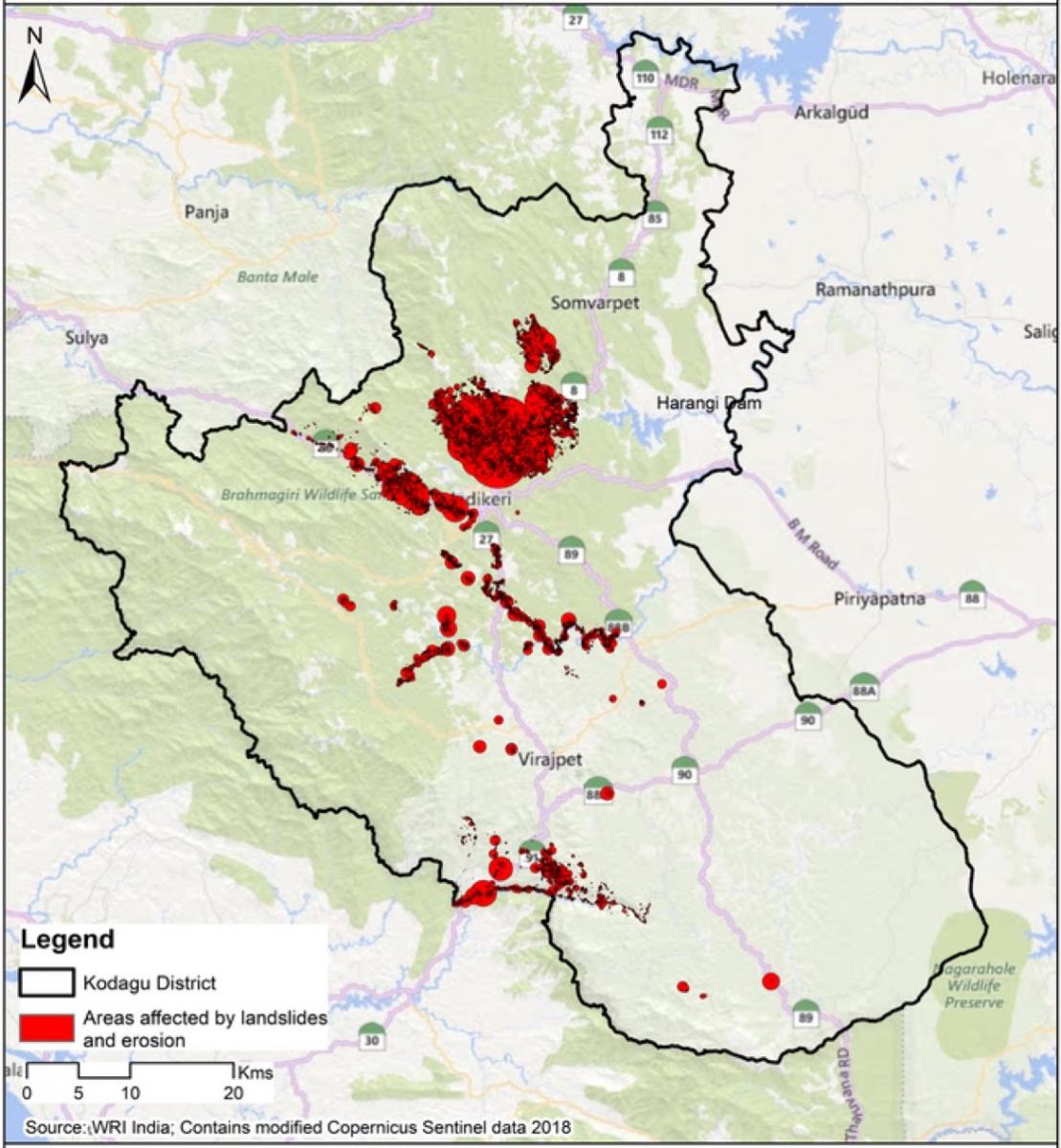
Beyond this direct loss estimates, there are other indirect losses that are long-term and complex. For example, these landslides have brought significant sediment load within the drainage channels and connected water reservoirs. One such impacted reservoir is the Harangi reservoir, which is located close to the northern impacted areas of the Kodagu district. Using pre- and post-landslide open source satellite images and advanced GIS image processing, WRI India generated map showing Total Suspended Solid (TSS) concentration within the Harangi reservoir. The post landslide TSS concentration has increased by almost 100 times due to flow of increased load of soil and sediment within the reservoir. Such high load of soil and sediment inflow causes sedimentation within the reservoir and thereby, significantly reduces the water holding capacity of the reservoir.
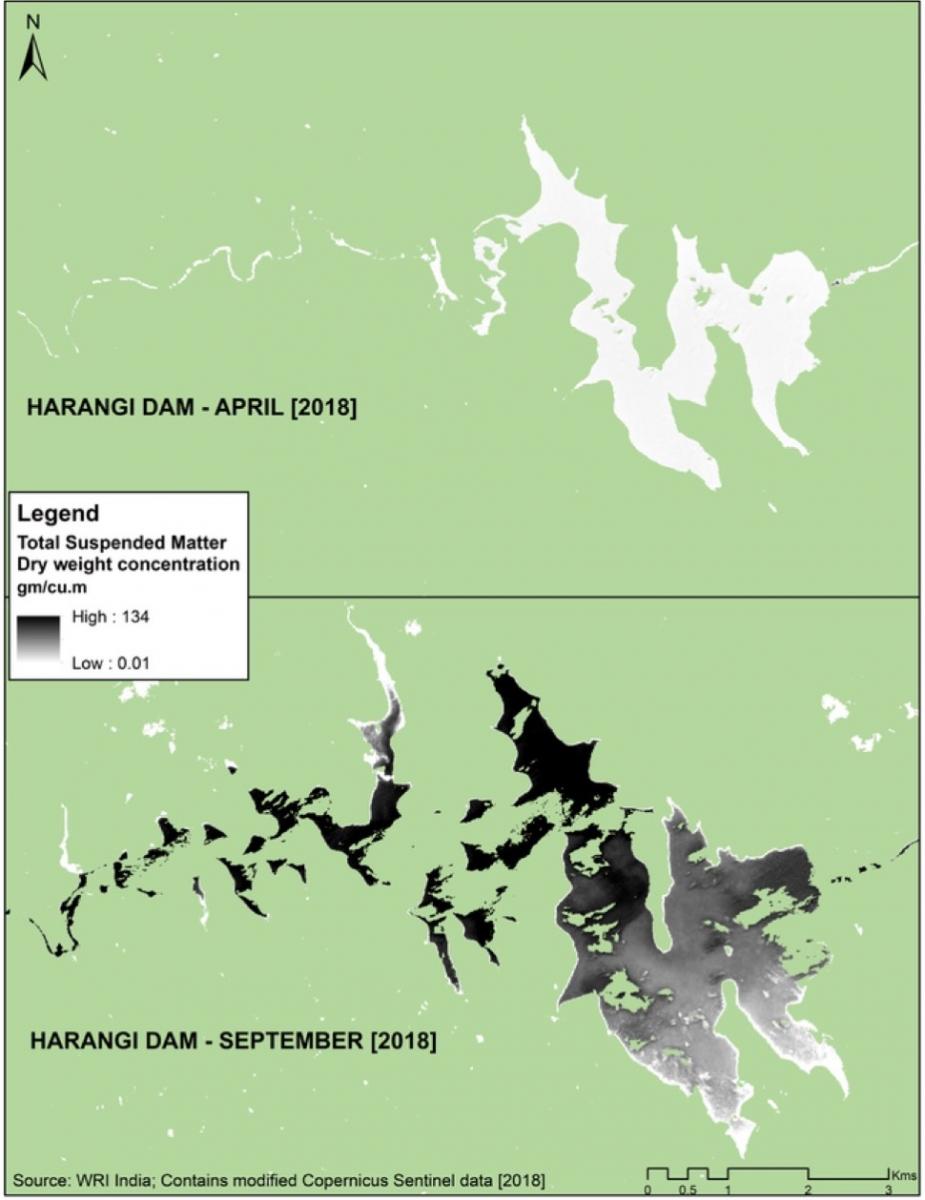
As per the Geological Survey of India, around 0.42 million square kilometre land area (or 12.6% of total land area) of India is landslide prone. Around 21 percent of these landslide prone areas (approximately 90,000 square kilometre) are located in Western Ghats and Konkan hills of Tamil Nadu, Kerala, Karnataka, Goa and Maharashtra. Steep slopes and vulnerable geology coupled with high precipitation increases the susceptibility to landslides. This Global Landslide Susceptibility Map, created by scientists at the National Aeronautics and Space Administration (NASA) and published in 2017 at 1 km resolution shows that the landslide susceptibility is high (yellow) to very high (red) along the entire stretch of Western Ghats.
This stretch has also seen numerous landslide events (orange dots) over the last decade as shown in the following map. Therefore, it is utmost important to keep in mind the natural risk and vulnerabilities as well as the history of landslides in this region while planning for any developmental activities.
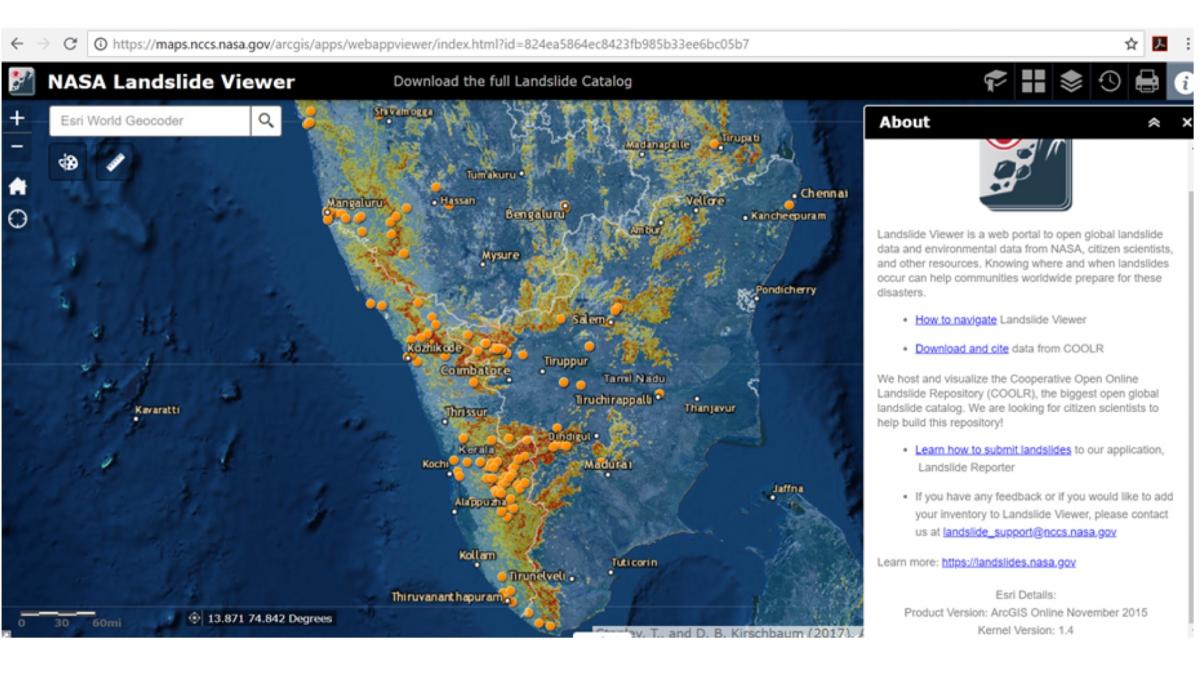
India is seeing rapid infrastructure development in form of construction of new roads, bridges, railway lines, tunnels, as well as the expansion and upgradation of existing infrastructure. Such development could increase the risk of landslides in areas already susceptible to landslides. A high-level analysis of road density across the southern-peninsula using ResourceWatch shows that the road density in the landslide susceptible Western Ghat region is almost similar to non-susceptible regions. Most of these construction activities are undertaken by blasting, excavating and realigning hill slopes and clearing vegetation/ forest covers. All these activities add further risk and vulnerabilities for landslide.
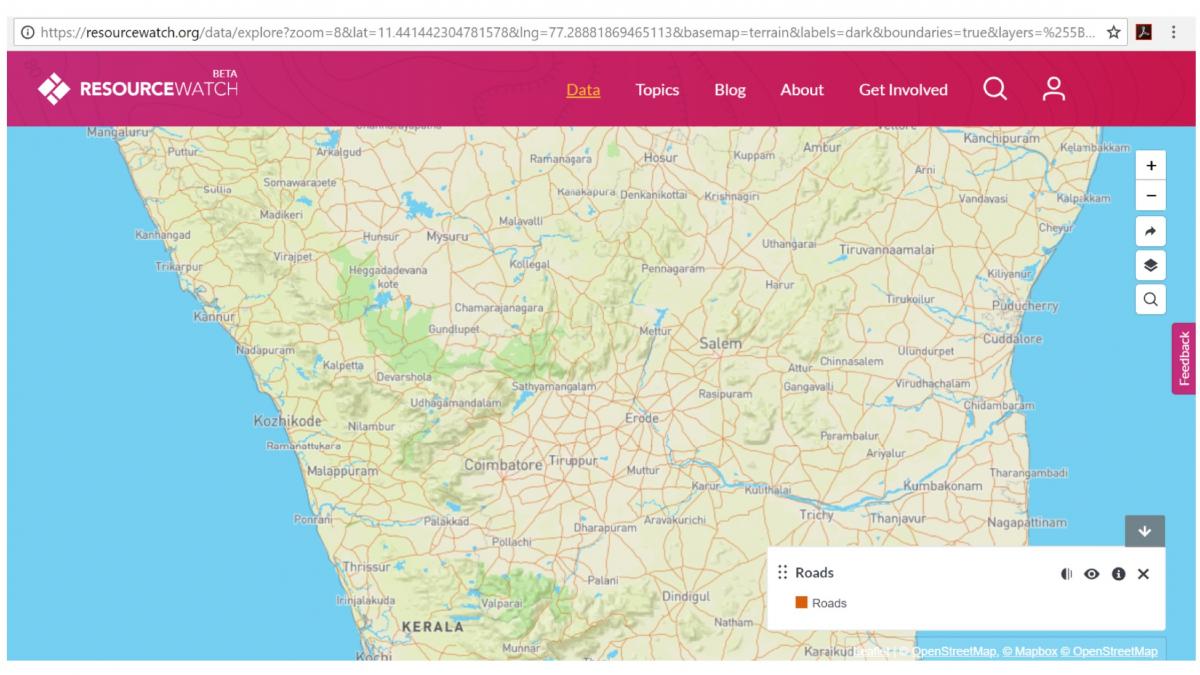
This region is also dotted with a number dams and reservoirs that adds further risks to the existing landslide susceptibility of this region by creating local geological and hydrological imbalances and associated local level minor earthquakes or seismic activity.
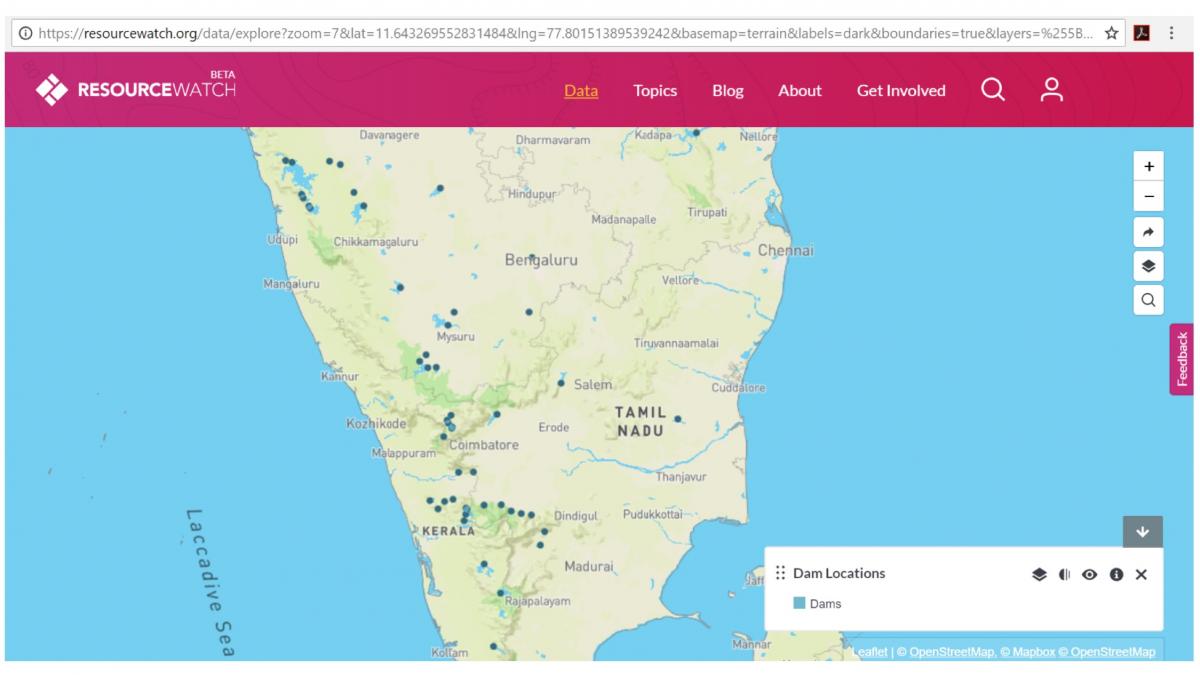
Most of the landslides in the Kodagu region happened due to slope failure along the roads as observed in the following WRI India generated maps of the landslide-affected areas. Moreover, the landslides may have exacerbated due to inadequate landslide prevention measures like retaining walls and drainage channels.
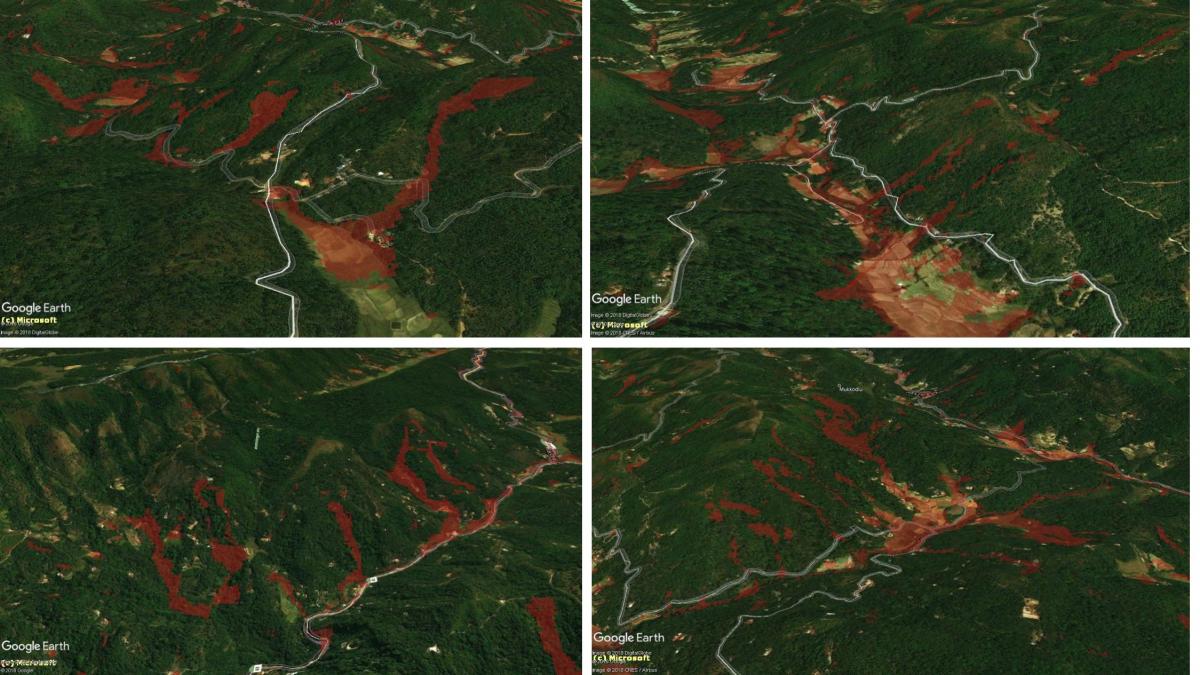
The natural landslide susceptibility increases multi-fold, if the susceptible areas face loss in forest cover. An analysis using Global Forest Watch shows that the Kodagu district has suffered a loss of approximately 2,908 hectare (equivalent to more than 4,000 soccer fields) of tree cover (having >30% canopy density) between 2000 and 2017.
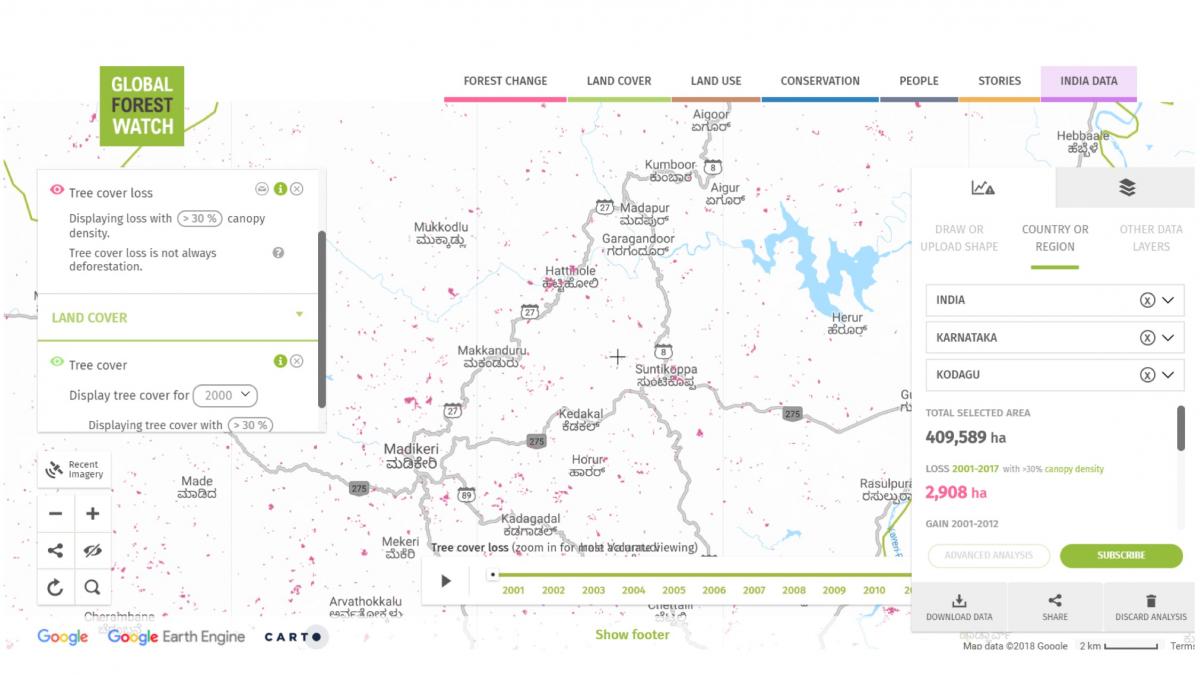
Loss in forest cover can be attributed to either infrastructure development and the construction of residential or commercial buildings, or the conversion of forest land to farming or plantation land. This map, generated by WRI India, of landslide affected areas also show that farming and plantation has also contributed to certain landslides.
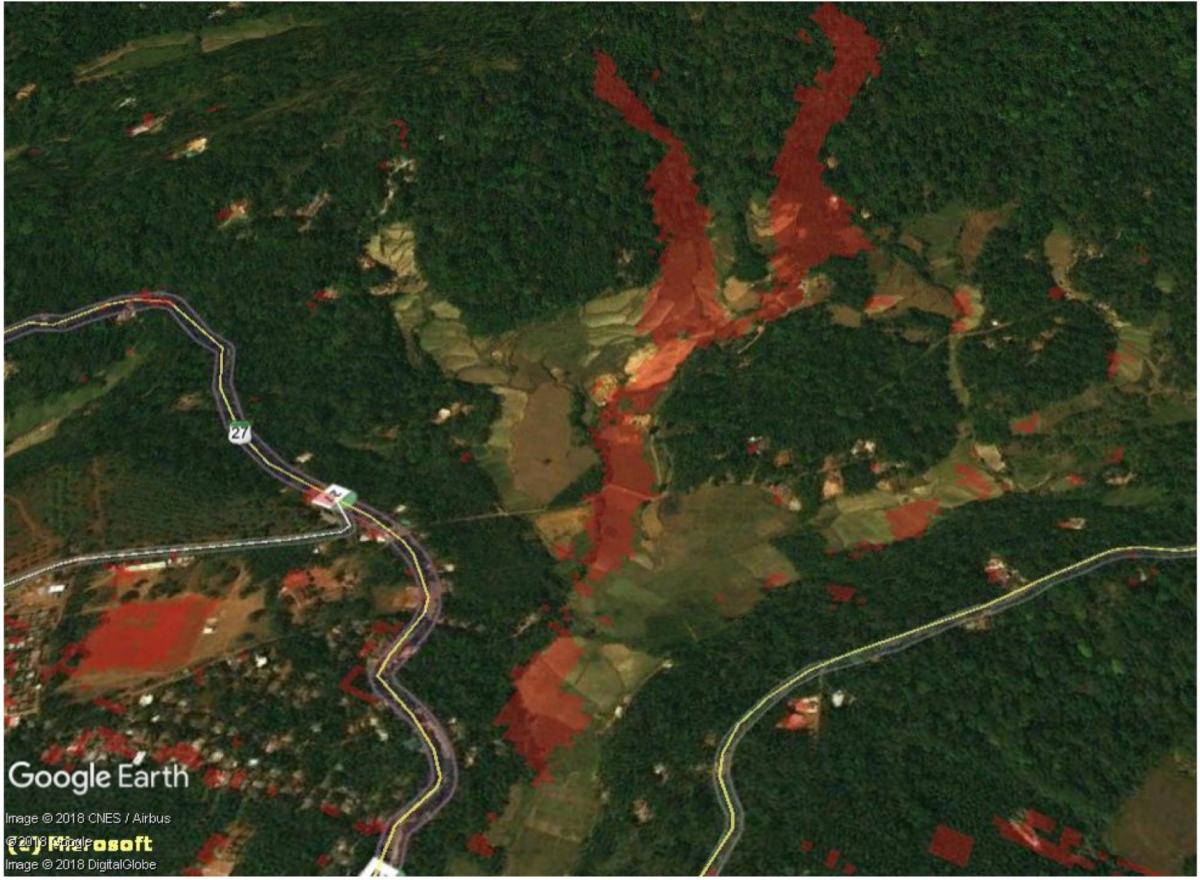
It is evident from the Kodagu disaster as well as from other recent natural disasters that these disasters are primarily caused by stressed water – land – biosphere system coupled with extreme climatic events. It’s a surprise that we will be experiencing more extreme climatic events going forward. A report by the UN Office for Disaster Risk Reduction, published in 2015, mentioned that most disasters that could happen have not happened yet.
Consequences like the Kerala and Kodagu disaster and other irreversible ecosystem losses are rarely prioritized in the developmental decision-making processes. Moreover, by calling them natural disasters and moving on results in a lack of accountability and encourages further developments that put significant stress on the water, land, and biosphere systems. Most of the time, those who gain from such risky developments rarely bear the cost of the consequences. This needs to change before it is too late.